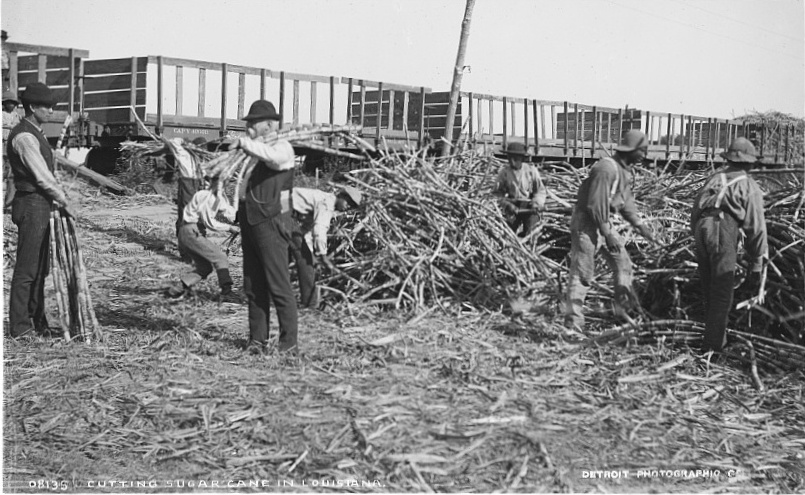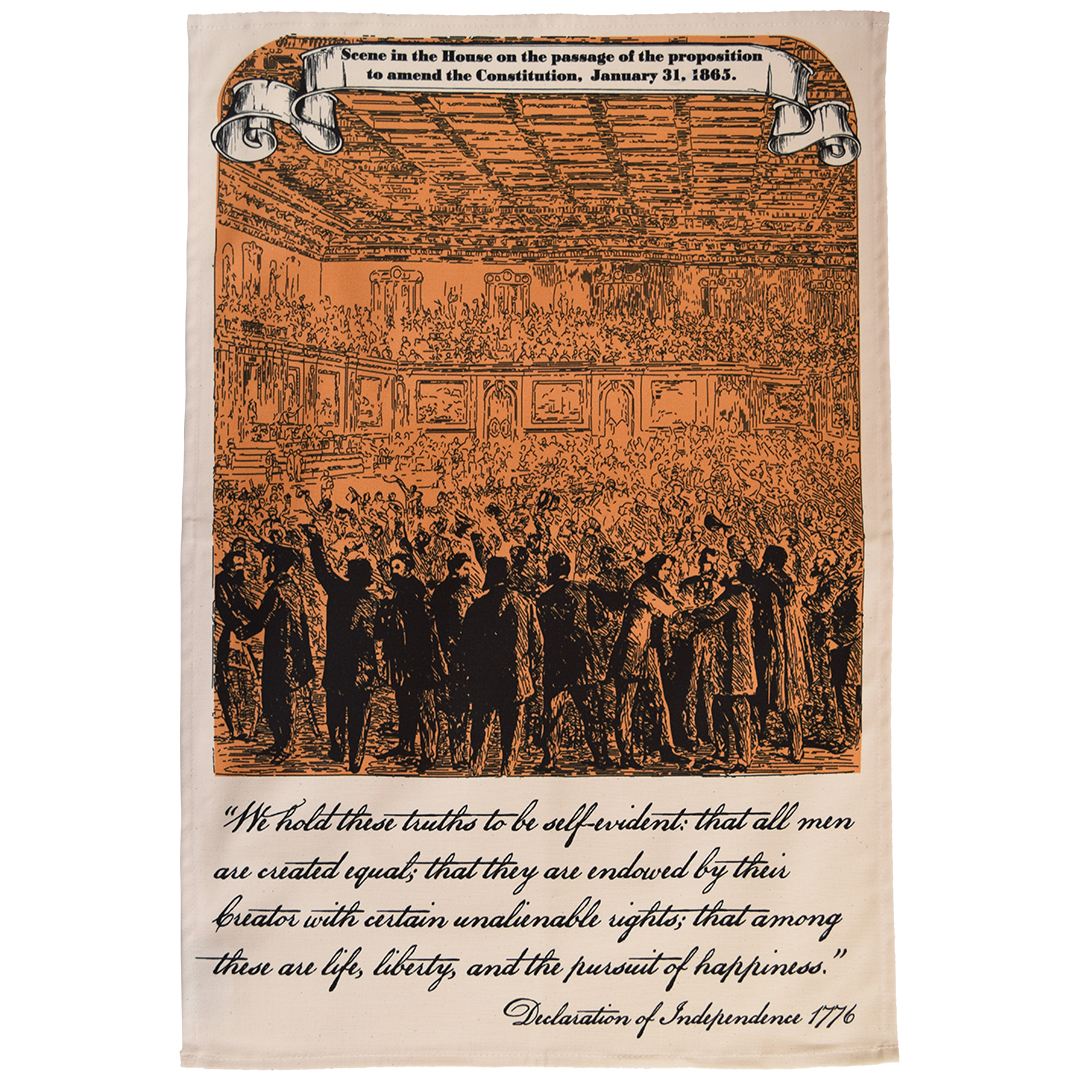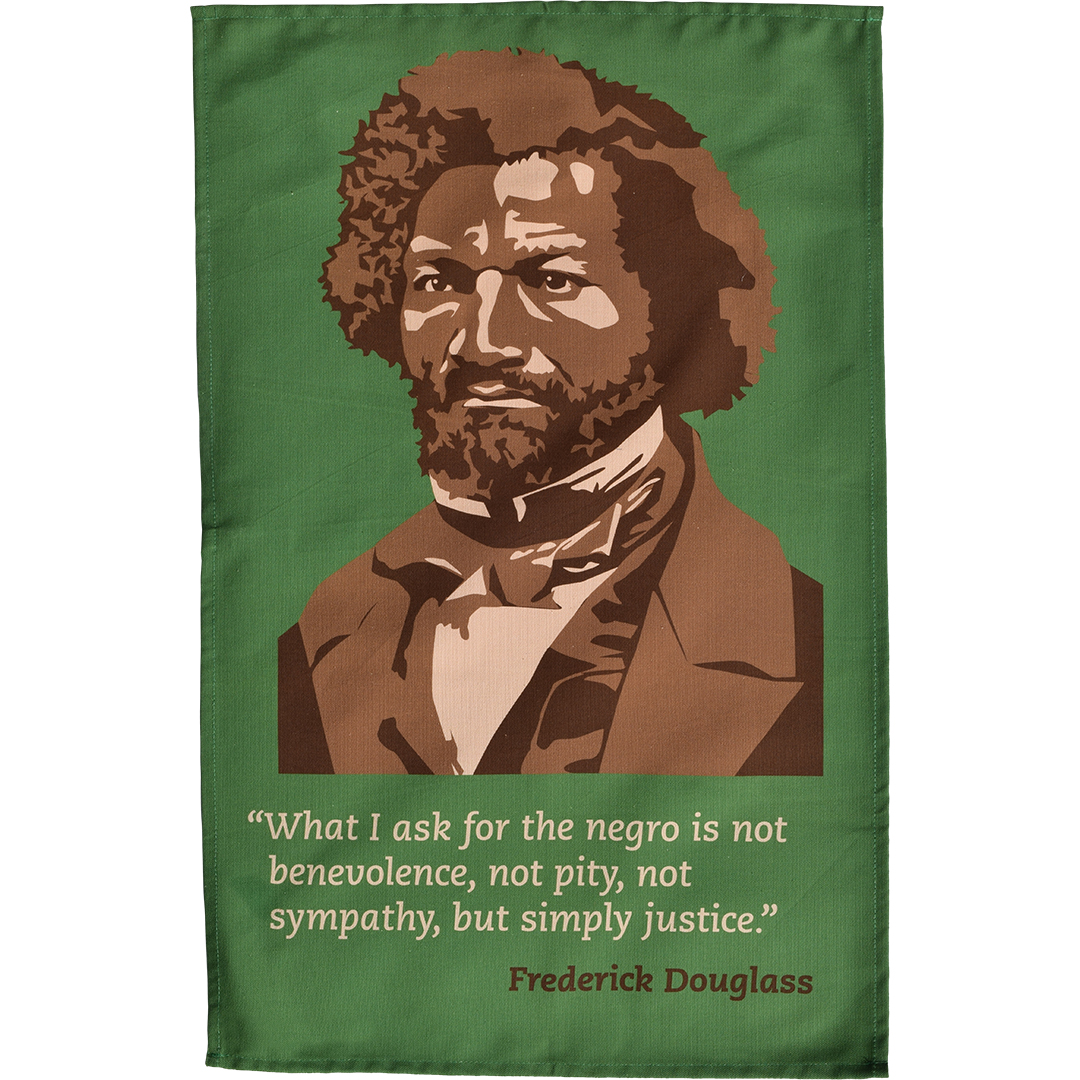Not Without a Fight: The Sugar Cane Labor Strike of 1887
Posted by Pete on Nov 22nd 2021
The story of the strike that ended in a massacre...
American democracy, both political and economic, took huge strides forward when the Union won the Civil War in 1865.
Constitutional amendments locked in the abolition of slavery and black voting rights. African American veterans like Robert Smalls were soon being elected in parts of the South.
Then, very quickly, things fell apart.
A milestone in the history of black liberation, the Reconstruction Amendments aimed to guarantee the freedom and civil rights of former slaves.
Click to view our Reconstruction Amendments tea towel
From the 1870s, white terrorism in the South began to hack away at the democratic gains won by and for African Americans during the War.
In 1877, U.S. Grant's progressive presidency reached the end of its second term, and Union troops withdrew from the former Confederate states. That was when things got really bad.
White supremacist groups like the KKK used violence to intimidate black voters in the South, clearing the way for Confederate elites to regain political office. Attempts to organize the black working class were brutally repressed.
This repression culminated in the Thibodaux Massacre of November 1887.
Frederick Douglass had been a huge supporter of U.S. Grant, especially his attempts to crack down on white terrorism in the South
Click to view our Frederick Douglass tea towel
Once Union troops were pulled back North, the old planter aristocracy had free rein to almost fully restore the slave system in sugar production.
The Louisiana Sugar Producers Association (LSPA) was formed in 1877 for that purpose: a cartel of the largest planters in the state, the LSPA worked together to make life a living hell for the mostly black workforce.
They agreed a uniform pay scale to undermine collective bargaining and withheld 80% of wages until the end of the harvest season, so workers couldn’t leverage the key harvesting weeks to improve their conditions.
By the 1880s, these planters – all of them former slaveholders and Confederate grandees – were also paying wages in ‘scrip’ instead of hard cash.
Scrip were just coupons redeemable at plantation-owned stores.
But just as Jim Crow was resisted, so too was this economic injustice. The sugarcane workforce wouldn’t accept this assault on their rights and dignity without a fight.

Life for black sugarcane workers in the Reconstruction Era was not all that different from the life of a slave before abolition.
Organized by the Knights of Labor, the workers demanded a wage increase to $1.25/day, paid weekly and in hard cash.
But the plantation owners ignored them. So, on 1 November 1887, those who did the planting walked out.
10,000 went on strike across Louisiana, including about 1,000 white workers. The action was timed to coincide with the crucial ‘rolling period’ of the sugar crop, when it had to be harvested and processed.
Having already corrupted Louisiana politics, the bosses turned to Governor Samuel Douglas McEnery, himself a plantation owner.
Eleven companies of the state militia were immediately deployed to ‘protect strikebreakers.’
Killing workers everywhere they went, the bosses’ army had soon driven the strikers back to Thibodaux, in Lafourche Parish.
Taylor Beattie was the District Judge in Thibodaux. He was also, of course, a sugar plantation owner, ex-Confederate, and former member of a white terrorist group, the Knights of the White Camelia.
He had set up an Orwellian ‘Peace and Order Committee,’ which commanded a white death squad of 300 paramilitaries.
On 23 November 1887, these white paramilitaries massacred black workers and their families after clashing with picket lines.
The three-week strike in Louisiana was the largest and most organized in the history of the US sugar industry. Its barbaric repression by an alliance of white terrorists and their planter bosses – which killed upwards of 50 African Americans – set worker organization back six decades.
As has so often been the case in US history, the black liberation struggle and the labor movement share their martyrs, at Thibodaux and elsewhere.
To quote Mother Jones, a Knight of Labor like the sugar workers in Louisiana:
"Mourn for the dead, fight like hell for the living."



